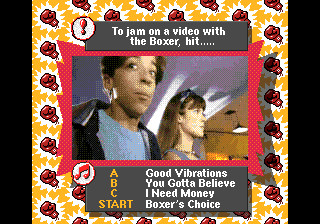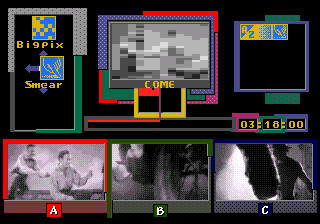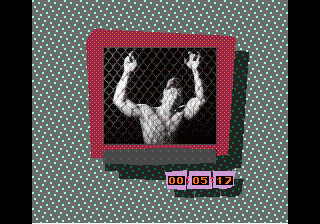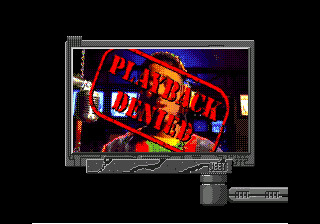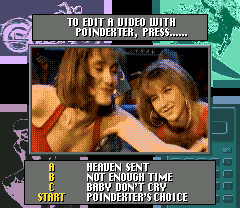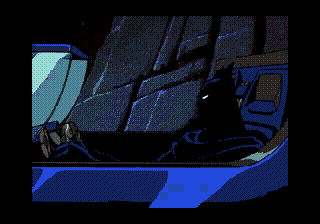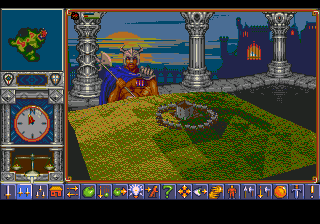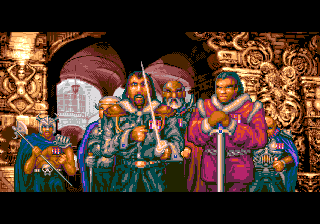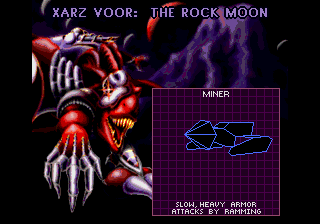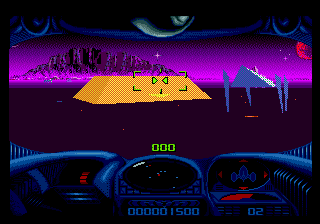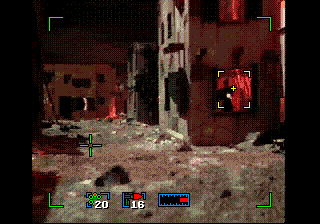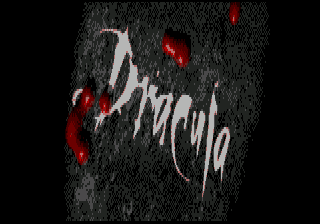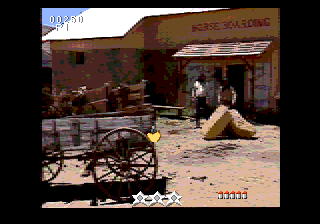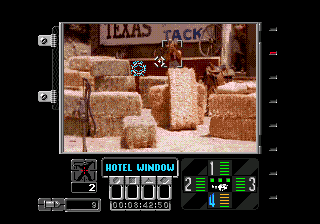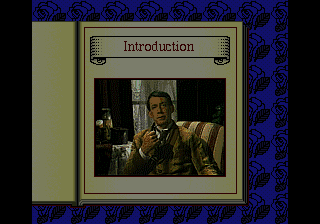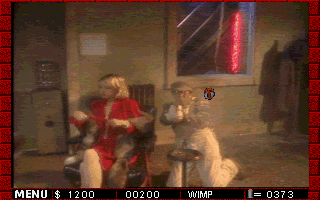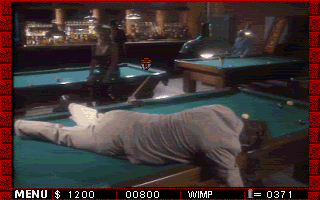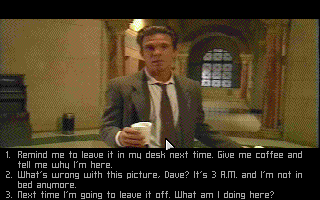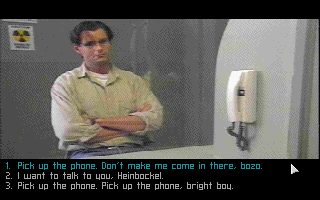I have a CD-ROM containing a DOS game based on the 1992 movie The Lawnmower Man. So what we have here is an interactive movie created very early in the PC multimedia era (1993 copyright), based on an early example from the netsploitation flick genre, and created by an outfit called Sales Curve, a name that doesn’t exactly scream “hip, cool digital entertainment”. But, really, how bad could this possibly be?
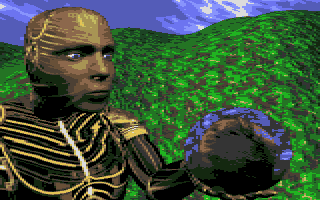
What we’re looking at is a game that runs in DOS 320x200x256-color mode that is trying to offer a faithful representation of virtual reality (or what the common perception of VR was in the early 1990s). Technologically, the game is very uneven. Some animations appear to be 160×100 in resolution, doublesized by doubling the width of the lines and skipping the rendering of every other line. Many VR-type animations look like above (and that drives much of the game). And then there is the occasional movie clip digitized directly from the source film, and quantized to a blue scale:
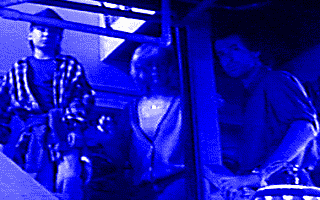
I tried to remember something about the movie from all those years ago, but I think I blocked most of it out. I remember all the phones ringing in the final scene, a sign that Cyberjobe had taken control of the world’s computer network. The intro of this game recounts that finale and goes on to describe that the mass ringing caused massive political and economic upheaval throughout the (physical) world. I really don’t know why the game cares about describing the goings-on of the real world when this game is obviously supposed to focus on what happens in the digital realm.
During the same overly long intro, a bunch of Jobe’s enemies from the film get digitized into cyberspace. One digital entity — perhaps an enemy of Cyberjobe, or perhaps just the player’s neutral character — is shown trapped in the all-encompassing cyberspace and Cyberjobe’s lawnmower gets territorial:
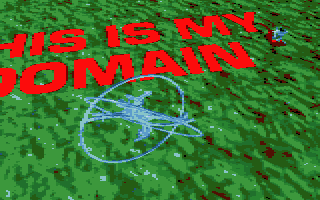
Right about the time that I start wondering if there is actually a game here, rather than just an extension of the movie, the intro loops. I get the bright idea to press a key and the game begins (quick game design tip: lead into a menu sometime during the opening proceedings). What kind of game is on offer here? One that would severely lower the bar for even the bottom-scraping interactive movie genre were it not for the fact that this game is probably one of the pioneers of the genre.
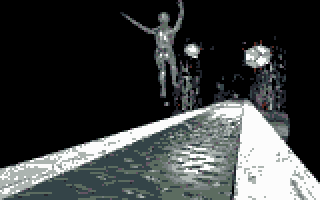
As far as I know, this game has 2 actions: Jump and duck. In the opening stage, your virtual character is being pursued by the malicious lawnmower. He runs along a narrow plain and a disembodied female voice advises you on when you should perform which action. Since everything is pre-rendered, there is obviously a tiny window in which you can possibly react with either the up or down key. This game mechanic reminds me heavily of American Laser Games titles such as Mad Dog McCree and Who Shot Johnny Rock?. If you miss that window, as I often did, you are treated to one of the most drawn-out game over sequences ever in which the lawnmower runs you down:
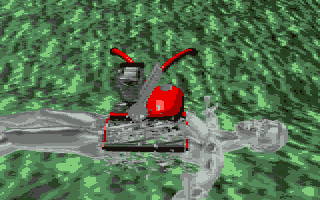
About the company responsible for this game — Sales Curve — did they ever survive? Turns out that they did, but renamed themselves SCi games, apparently shortly after this game. I have even played at least one other of their games for this blog, the RTS game Gender Wars.
See Also:
- Who Shot Johnny Rock? and Mad Dog McCree, 2 other games with the same frustrating “window of opportunity” gameplay mechanic as this game
- Gender Wars, from the same company
At MobyGames:

